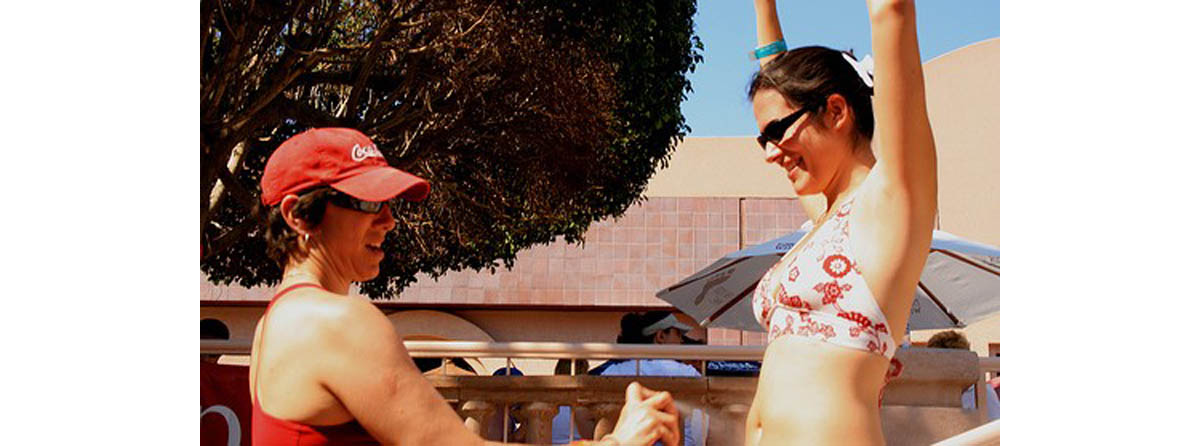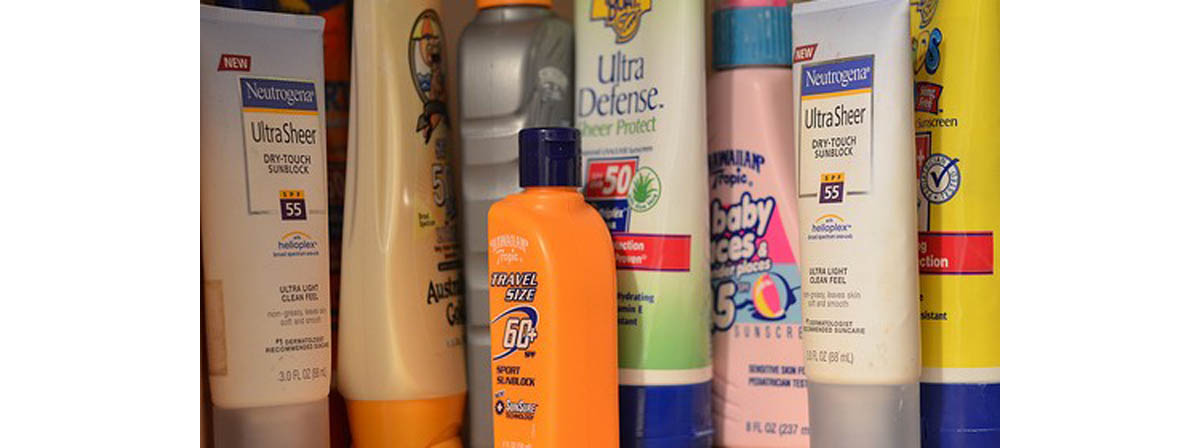If there's any basic rule about applying sunscreen, it's that more is usually better. A little dab of sunscreen is not enough. It's necessary to use enough sunscreen to cover every inch of sun-exposed skin if you are to enjoy real protection against the sun's harmful UV rays.

But is it also necessary to buy expensive sunscreens with an SPF of 50 or higher? Aren't they made with dangerous chemicals? Let's take a look at the ingredients lists for high-dollar sun protection first. That way, you'll be able to decide if these sunscreens are worth it, or if you're better off going with a cheaper option.
The highest-SPF sunscreens may contain:
- Avonbenzone. This chemical protects against the UV-A rays of sunlight, which are potentially more damaging than UV-B. It's not particularly stable in "greasy" formulas. It needs a small amount of acidity in the sunscreen or on the skin to work.
- Dioxybenzone (also known as benzophenone-8) protects against both UV-A and UV-B rays of sunlight. Rubbing alcohol dissolves it completely, but it's relatively resistant to being washed off the skin with water, which is good if you are swimming outdoors.
- Homosalate absorbs both UV-A and UV-B rays and is insoluble in water. It has the added advantage of sticking to the skin, so it can protect you without being absorbed by the skin, so there are fewer concerns about body-wide effects.
- Octocrylene absorbs UV-A rays and acts as a skin moisturizer. By protecting the skin against UV-A rays, it prevents direct damage to the skin's DNA. By moisturizing the skin, it keeps the skin soft, supple, and unwrinkled.
- Octyl salycilate (sometimes labeled as ethylene salicylate or as octosalate) absorbs UV rays, moisturizes the skin, and reduces inflammation.
- PABA (or para-aminobenzoic acid). This chemical is banned in the European Union but still used in Australia and the United States. Naturally occurring in the skin and elsewhere in the body as derivative of the B vitamin folic acid, PABA prevents the formation of scar tissue in the skin. (As an update, PABA is now no longer consider generally safe in the United States either, as of 2019.)
- Titanium dioxide and zinc oxide the mineral skin protectants that make the skin white. They're natural, they're non-toxic, they're inexpensive, and they offer excellent protection against the sun, but they can make black skin look purple after they are washed off.
Pricier sunscreen products almost never use titanium dioxide or zinc oxide because they "stain" the skin white, despite the fact these two ingredients offer excellent protection against the sun. You can sometimes still find products that contain PABA, although these are mostly being taken off the market. But if you are buying a sunscreen with SPF 50 to 100, chances are it will contain the other ingredients listed above. These ingredients aren't toxic and can be used in large quantities, up to 25 percent of the product in most countries, and up to 100 percent of products made in Japan.
Asian skin, incidentally, really does react differently to sun than other skin types do. People who have deep, golden skin tones tend to get blotchy, purplish reactions to sun injury. People who have fair skin tend to risk skin cancer, but people who have golden skin tones tend to have cosmetic issues from excessive skin exposure that aren't easily corrected with makeup. But is there really a point in getting extra SPF?
Why You Probably Don't Need A High-SPF Sunscreen
I'll make a confession. Summer before last I bought more SPF-70 sunscreen than I could use, and I'm going to have to throw it out because it's too old this year. And I didn't really need it, despite the fact I live in Texas where summers are definitely on the bright and sunny side. But do you need high-SPF sunscreen for yourself?

First, it may help to understand exactly what "SPF" is? An abbreviation for "sun protection factor," SPF was first computed for products designed to protect people on ice, not on beaches. And while SPF measures how long one can stay in the sun without damage, the SPF being the number of times longer the skin stays undamaged with the product compared to no sunscreen at all, it's just an estimate. Here's why:
- The sun doesn't cooperate with your skin protection efforts by beaming at the same intensity all the time. An SPF 15 sunscreen might theoretically protect your skin 15 times longer than the length of time it would stay burn-free with no sunscreen at all, but sunlight varies in intensity over time.
- Different skin types need different amounts of protection. Any recently injured skin — especially Asian skin, but even black skin — needs sun protection. Otherwise, the fairer the skin, the more protection it needs.
- Some common ingredients used in sunscreen, like those listed earlier in this article, stay on the surface of the skin. Others soak into the skin, where they get used up. The acidity of the surface of your skin, whether you splashed it with a product containing alcohol, whether you perspire, the relative humidity of the air around you, and whether your skin has come in contact with perspiration or water, all make a difference in how well sunscreen works.
And a sunscreen with a high-SPF sunscreen doesn't block a whole lot more sun. An SPF-15 sunscreen shields your skin against about 96 percent of the sun's rays. An SPF-50 sunscreen blocks about 99 percent of the sun's rays, as do SPF-70 and SPF-100 products. However, since all kinds of sunscreen tend to rub off or wash off by the end of two hours or less (as soon as 40 minutes after application when "water-resistant" sunscreen is exposed to actual water), no sunscreen works very long.
So what's the rule? It's really very simple:
Enough product to cover your whole body is typically 1-2 ounces (30 to 60 grams) every 2 hours you are outside. Enough product to cover face and arms is usually 1-2 teaspoons (5 to 10 grams) every 2 hours you are outside.
How often you use sunscreen is more important than which sunscreen you use. The high-SPF products tend to contain moisturizers and skin restorative ingredients that may be worth the money, but for simple sun protection, it's not so much which product you use as how often you use it and whether you use enough each time.
- Maier T, Korting HC. Sunscreens - which and what for? Skin Pharmacol Physiol. 2005 Nov-Dec
- 18(6):253-62. Epub 2005 Aug 19.
- Ou-Yang H, Stanfield J, Cole C, Appa Y, Rigel D. High-SPF sunscreens (SPF ≥ 70) may provide ultraviolet protection above minimal recommended levels by adequately compensating for lower sunscreen user application amounts.J Am Acad Dermatol. 2012 Dec. 67(6):1220-7. doi: 10.1016/j.jaad.2012.02.029. Epub 2012 Mar 30. PMID: 22463921 [PubMed - indexed for MEDLINE].
- Photo courtesy of Maggie by Flickr : www.flickr.com/photos/38494596@N00/443642299/
- Photo courtesy of Joe Shlabotnik by Flickr : www.flickr.com/photos/joeshlabotnik/6884555524/

